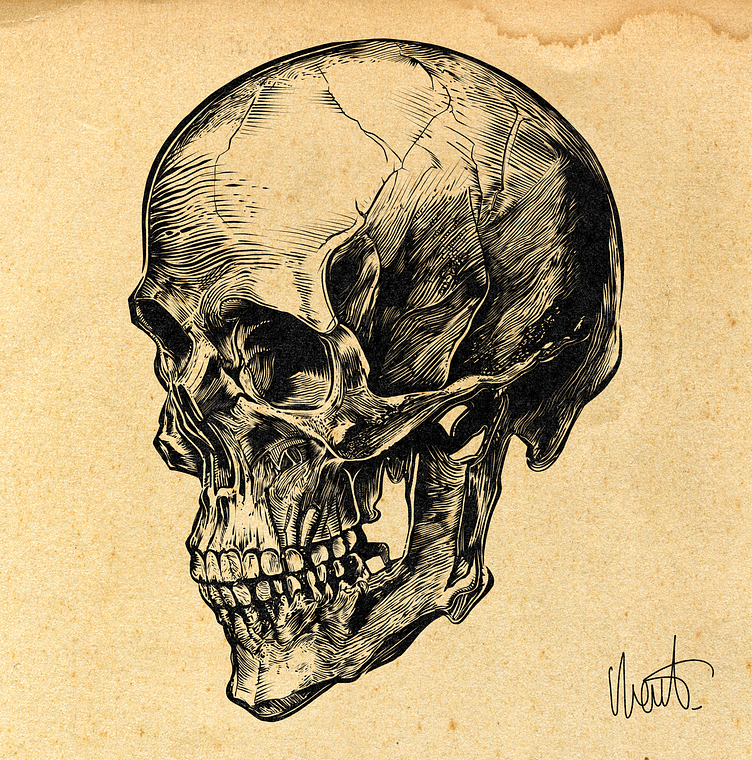SKULL ART
SKULL ART by David Vicente
The use of skulls in macabre iconography finds its origins in the Memento mori, a Roman expression meaning "Remember that you are mortal," dating back to antiquity. According to Roman tradition, during parades, a young servant would remind a victorious general that he too would face death, despite his triumph. He would whisper, "Respice post te, Hominem te esse memento. Memento Mori!" ("Look behind you, remember that you are but a man. Remember that you will die."). Thus, the Memento mori urges one to turn away from the distractions offered by the earthly world, prompting reflection on the vanity of life's pursuits that are quickly overshadowed by death. This philosophy gained prominence in medieval Europe, encouraging contemplation of life's brevity. In the 15th century, the use of skulls was prominent in Christian art, particularly in religious scenes such as the Crucifixion, where a skull could be seen at the feet of Christ, symbolizing the transition from death to Resurrection. The skull could be perceived as a symbol of spiritual rebirth, being an imperishable part of the body that holds the soul and represents physical death, a necessary passage to attain a higher spiritual level. However, the skull could be represented in various forms. For example, the famous skull and crossed bones, often found on poison vials, were a common motif in Christian tombs during the Middle Ages. This symbol was adopted by pirates to adorn their black flag, also known as the "Jolly Roger." The pirates diverted the meaning of Memento mori: unlike Christians, they rejected a virtuous life, choosing instead a brief existence filled with adventures and transgressions. The skull could thus serve as a reminder of the transience of their lives, albeit thrilling.
